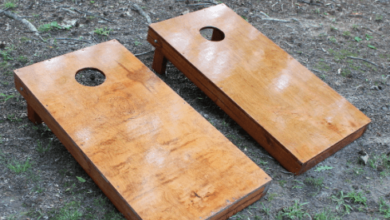Right Way To Use Power Strip: A Step-by-Step Guide

How often do you really think about how to use your power strip properly? Do you plug devices in willy-nilly without a second thought about safety? If so, you’re not alone – many people overlook the potential hazards that come with misusing these ubiquitous outlets. When done incorrectly, power strips can pose fire and electric shock risks.
This step-by-step guide will help you learn how to use your Power strip safely and keep all your devices charged.
Step 1: Choosing a Power Strip that Fits Your Needs
While choosing a power strip, be sure that the one you buy has the features required for your setup. You’ll find many available, so take your time to make sure you check off the must-have features.
- Consider outlet capacity. Basic power strips typically have 3-6 outlets, which is great for plugging in the essentials. However, if you often work with more than one desktop computer, a laptop, or another piece of electronic equipment, obtain something with an 8–10 outlet capacity or more. This gives you plenty of room to space everything out at a comfortable distance.
- Look for a power strip that provides surge protection safeguards. Surges can damage sensitive electronics if not absorbed properly. Reputable manufacturers display the surge rating in joules, giving insight into the protection level provided. The higher the joule value, the better it can withstand power anomalies.
- Be mindful of cable length, too. Having enough reach is critical for preventing unsightly cords from trailing across walks. Aim for a minimum of six feet or 10 feet if wall space allows for an orderly workstation
- Consider maximum load capacity as well. This tells you what wattage, or amperage can be drawn before it becomes a potential overload. The best brands also offer covers that are manufactured from fire-resistant materials such as metal in extreme cases, for that extra level of protection.
Step 2: Inspect the Power Strip for Safety
Once you’ve selected a power strip, inspect it visually before first use. Look for cracks, dents, or other signs of damage to the plastic housing that could indicate electrical faults. Inspect the electrical cord closely, feeling for cuts, loose plugs, or excessive fraying that renders it unsafe.
The outlets themselves should be securely affixed – try wiggling them gently to test for looseness. Check that the on/off switch operates as intended. Refer to the included manual for any other precautions listed by the manufacturer. If any defects are noticed, dispose of the strip properly and choose a replacement.
Step 3: Placement
Proper placement is important to avoid accidents as well as allow adequate airflow for your devices. Some placement tips:
- It should be on a hard, flat surface like a tabletop away from sink or tub areas to prevent water contact.
- Close to an accessible outlet to prevent unsightly cords from running across floors.
- In an open, well-ventilated area away from heat sources to prevent overheating.
- There is enough space on all sides for airflow around the power strip and plugged devices.
- Away from foot traffic areas or underneath furniture to avoid accidental stepping on cords.
- Secure longer cords safely using tape or ties to prevent tripping hazards.
Step 4: Plugging In Devices
Now that the power strip is set up properly, you can start plugging in devices. However, do so judiciously:
- Besides, plug-in devices directly without using power strips on power strips for safety.
- Distribute the load evenly across outlets to avoid overloading any one outlet.
- Start with heavier drawing appliances like TVs, microwaves, etc, first before adding others.
- Leave at least one empty outlet as a buffer to allow for occasional additional plug-ins.
- Arrange cords neatly using ties or cord clips provided to prevent tangling.
- Minimize the use of outlet splitters or taps with the power strip for safety.
- Completely switch off and unplug devices when not in use to save power.
- Proper load distribution and cable management ensure both safety and convenience of usage.
Step 5: Usage Tips
Here are some useful tips for safely operating your power strip daily:
- Only for indoor household use and keep away from wet areas or outdoors.
- Regularly check cords and outlets for looseness, wear and tear or overheating.
- Exercise caution when plugging/unplugging devices with children or pets around.
- Use individual switches on multi-switch power strips to control subsets of devices.
- Clean dust accumulation using dry cloth without liquid cleaners, which are dangerous.
- Monitor for strange smells or sounds that could indicate potential issues.
- Unplug completely during electrical storms or when away for extended durations.
- Adhering to basic usage best practices prevents mishaps and extends the lifespan of your power strip investment.
Step 6: Maintenance
Some regular maintenance keeps your power strip in top working condition:
- Wipe dust using a dry cloth monthly to prevent accumulation from affecting performance.
- Check for looseness in cord connection, outlets or housing and tighten if required.
- Trim long device cords, which could foster dirt collection using cable cutters.
- Inspect for cuts or damage to power strip housing or plug after every six months of use.
- Switch off and unplug completely before storage to avoid surprise switches on.
- Replace power strips older than 3-5 years as components degrade gradually over time.
- Check for the latest safety certifications before purchasing replacements.
- Proper care and timely maintenance actions help fix issues before they escalate into bigger problems.
Final Thoughts
Now that you know how to safely set up a power strip, are you ready to evaluate your current usage? By following this guide, you’ve learned how to reduce risks and maximize convenience. Don’t let this knowledge fade—share it with others, too. Applying these steps can help keep our homes and offices running safely for years to come. What are you waiting for? Check your power strips now.





